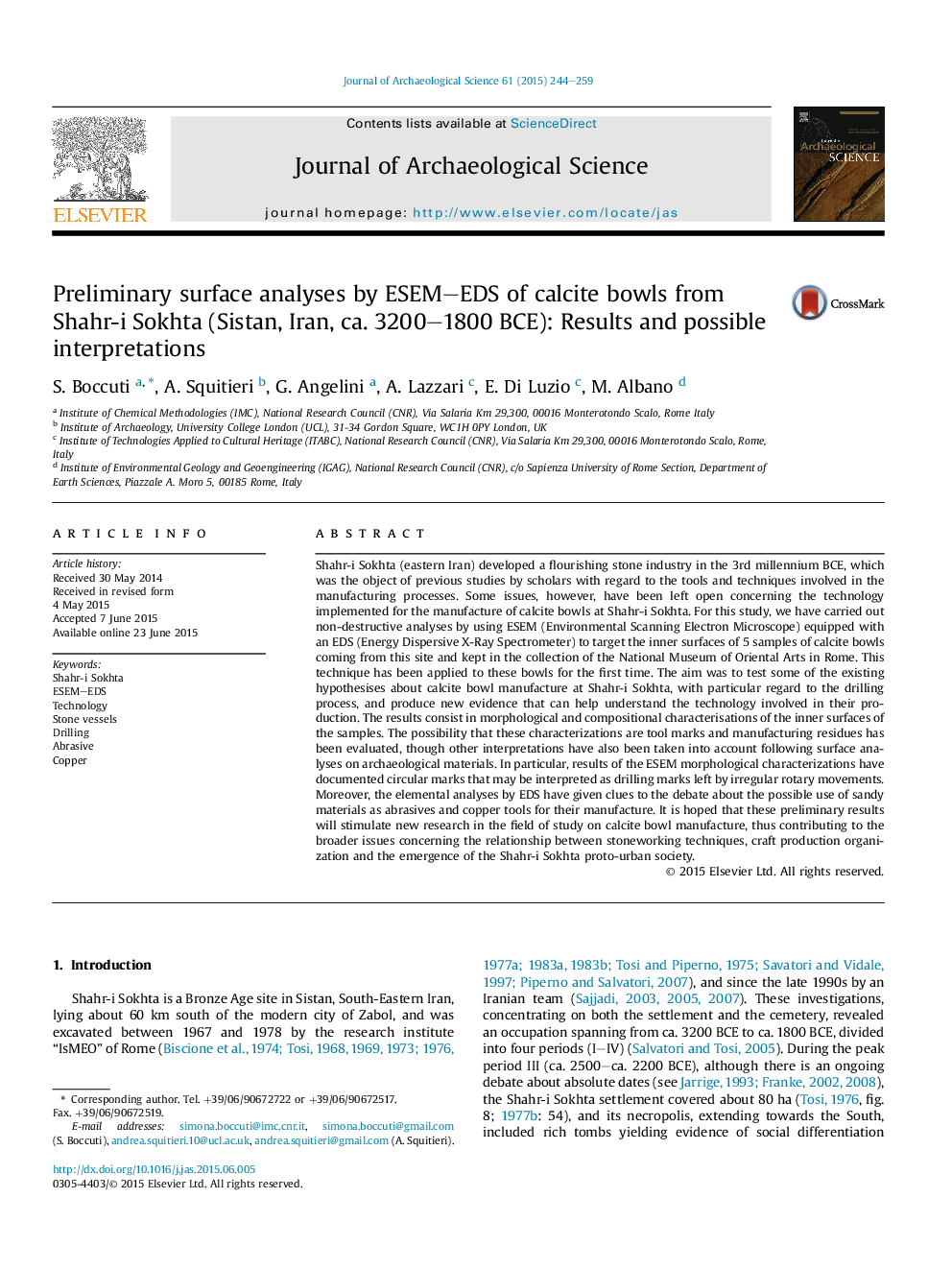| کد مقاله | کد نشریه | سال انتشار | مقاله انگلیسی | نسخه تمام متن |
|---|---|---|---|---|
| 7441826 | 1483899 | 2015 | 16 صفحه PDF | دانلود رایگان |
عنوان انگلیسی مقاله ISI
Preliminary surface analyses by ESEM-EDS of calcite bowls from Shahr-i Sokhta (Sistan, Iran, ca. 3200-1800Â BCE): Results and possible interpretations
دانلود مقاله + سفارش ترجمه
دانلود مقاله ISI انگلیسی
رایگان برای ایرانیان
موضوعات مرتبط
مهندسی و علوم پایه
مهندسی مواد
دانش مواد (عمومی)
پیش نمایش صفحه اول مقاله

چکیده انگلیسی
Shahr-i Sokhta (eastern Iran) developed a flourishing stone industry in the 3rd millennium BCE, which was the object of previous studies by scholars with regard to the tools and techniques involved in the manufacturing processes. Some issues, however, have been left open concerning the technology implemented for the manufacture of calcite bowls at Shahr-i Sokhta. For this study, we have carried out non-destructive analyses by using ESEM (Environmental Scanning Electron Microscope) equipped with an EDS (Energy Dispersive X-Ray Spectrometer) to target the inner surfaces of 5 samples of calcite bowls coming from this site and kept in the collection of the National Museum of Oriental Arts in Rome. This technique has been applied to these bowls for the first time. The aim was to test some of the existing hypothesises about calcite bowl manufacture at Shahr-i Sokhta, with particular regard to the drilling process, and produce new evidence that can help understand the technology involved in their production. The results consist in morphological and compositional characterisations of the inner surfaces of the samples. The possibility that these characterizations are tool marks and manufacturing residues has been evaluated, though other interpretations have also been taken into account following surface analyses on archaeological materials. In particular, results of the ESEM morphological characterizations have documented circular marks that may be interpreted as drilling marks left by irregular rotary movements. Moreover, the elemental analyses by EDS have given clues to the debate about the possible use of sandy materials as abrasives and copper tools for their manufacture. It is hoped that these preliminary results will stimulate new research in the field of study on calcite bowl manufacture, thus contributing to the broader issues concerning the relationship between stoneworking techniques, craft production organization and the emergence of the Shahr-i Sokhta proto-urban society.
ناشر
Database: Elsevier - ScienceDirect (ساینس دایرکت)
Journal: Journal of Archaeological Science - Volume 61, September 2015, Pages 244-259
Journal: Journal of Archaeological Science - Volume 61, September 2015, Pages 244-259
نویسندگان
S. Boccuti, A. Squitieri, G. Angelini, A. Lazzari, E. Di Luzio, M. Albano,